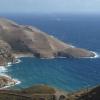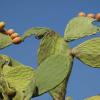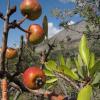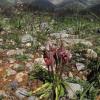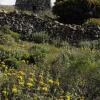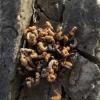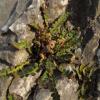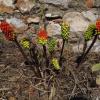Phrygana vegetation on southern Greece
Life with dry summers and wet winters
By Vassilis Hatzirvassanis
Mediterranean climate is well known for its dry summers and wet winters. Many plant species have adapted to it by growing during the wet winter season. The southernmost tip of Greece is covered by a vegetation mosaic of evergreen forests, dry grassland and phrygana, and is almost desert-like in summer.
Phrygana, the east Mediterranean version of garigue, consists of low, cushion-shaped thorny shrubs, such as the endemic Greek Spiny Spurge Euphorbia acanthothamnos and Jerusalm Sage Phlomis fruticosa with its characteristic yellow flowers.
Groups of evergreen scrub, mostly Kermes Oak Quercus calliprinos and Montpellier Maple Acer monspessulanum, spot the lower slopes with some cover from strong winds, but the exposed summit ridges are mostly covered of dry grassland.
The plant growing season starts with the winter rains. Early spring is a season of plenty, and the ground is covered by a surprising variety of flowers. As spring progresses, a multitude of insects fly among the flowers. Beetles, flies, and solitary bees are important pollinators for the Mediterranean plants, such as the genus Arum that is pollinated by flies.
Predators are fairly common but difficult to watch. Golden Jackal, Red Fox, Badger, Beech Marten, all live close to humans and are often killed by cars. Close inspection of vegetation reveal diverse invertebrate predators, such as mantises, ground beetles, scorpions, centipedes and spiders. Spiders are fairly numerous and harmless to people, with the exception of the highly venomous Mediterranean Black Widow Spider Latrodectus tredecimguttatus.
In summer, small plants shed most or all of their leaves to minimize water consumption, and phrygana become brown-coloured and dead-like. The small fern Ceterach officinarum grows on shady cliffs and may look deceivingly dry, but activates one or two days after a rainfall.
Fires are common, due to the high summer temperatures and the low water content of phrygana. Fire open patches in dense vegetation, where wild orchids and therophytes (grass) thrive, enhancing the mosaic quality of the Mediterranean landscapes.
Autumn is another plentiful season, with many ripe fruits that is important food for wild mammals and migratory birds. Shrubs with edible fruits include the indigenous Almond-leaved Pear Pyrus amygdaliformis and the -imported by humans- Prickly Pear Opuntia ficus-indica, both important elements of the dry landscapes of southern Greece.

